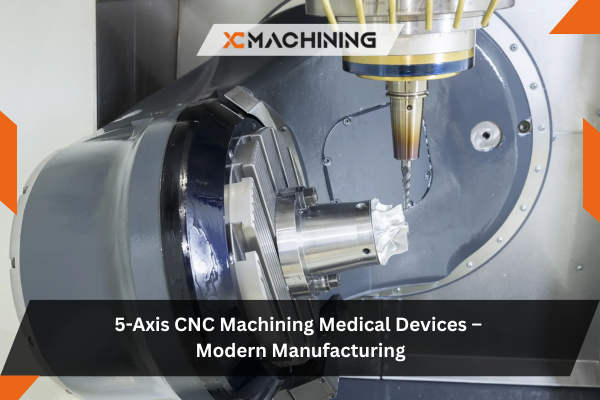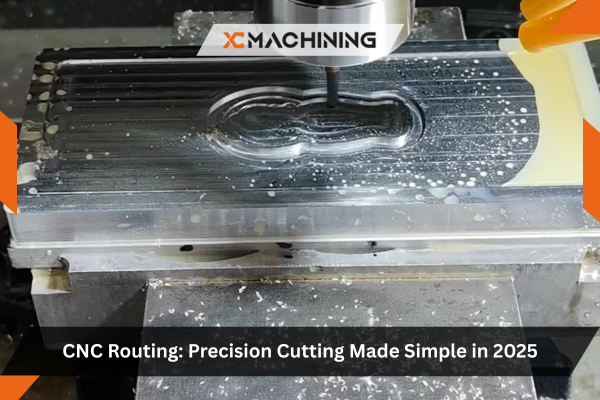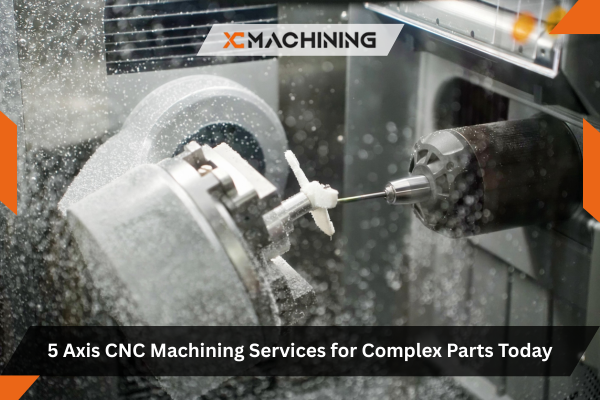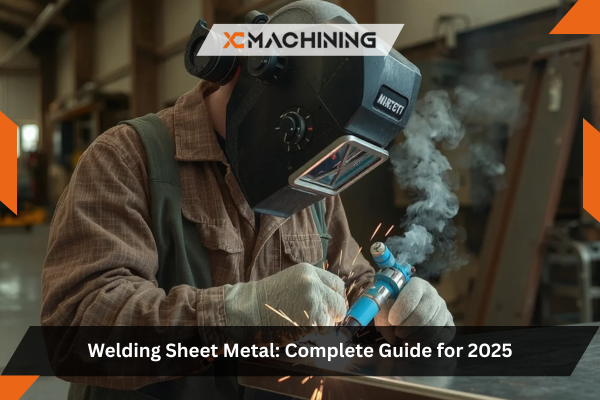The medical device industry continuously pushes the boundaries of what’s possible in precision manufacturing. As surgical instruments become more sophisticated, implants grow increasingly complex in geometry, and diagnostic equipment demands tighter tolerances, traditional 3-axis machining often reaches its limits. Enter 5-axis CNC machining a transformative technology that has revolutionized how manufacturers produce the intricate components that modern healthcare depends upon. This advanced manufacturing capability enables the creation of complex medical devices that were once impossible or prohibitively expensive to produce, opening new frontiers in patient care, surgical techniques, and diagnostic capabilities. Understanding how 5-axis CNC machining serves the medical industry helps manufacturers, engineers, and healthcare professionals appreciate the technology enabling today’s advanced medical devices.
Table des matières
Understanding 5-Axis CNC Machining Technology
Before exploring medical applications, it’s essential to understand what distinguishes 5-axis CNC machining from conventional approaches. Traditional 3-axis CNC machines move cutting tools along three linear axes—X (left-right), Y (front-back), and Z (up-down). While these movements produce many geometries effectively, they face inherent limitations when machining complex features, undercuts, or compound angles that characterize advanced medical devices.
A 5-axis CNC machine adds two rotational axes to the three linear movements. The A-axis rotates around the X-axis, while the C-axis (or B-axis depending on configuration) rotates around the Z-axis. This additional rotational capability fundamentally transforms manufacturing possibilities by allowing the cutting tool to approach the workpiece from virtually any angle without repositioning the part in multiple setups.
Types of 5-Axis CNC Configurations
Different 5 axis CNC machine designs suit specific manufacturing requirements:
Swivel-rotate-style (trunnion table): The workpiece rotates on two axes while the spindle remains stationary or moves only along linear axes. This configuration provides exceptional rigidity for heavy parts and aggressive cutting operations common in medical implant manufacturing.
Swivel-rotate-style (swivel head): The cutting tool rotates on two axes while the workpiece remains stationary or moves linearly. This design suits larger medical equipment components where workpiece movement would be impractical.
Combination style: Both the table and spindle incorporate rotational axes, providing maximum flexibility for complex geometries. Many 5 axis cnc machining services utilize this configuration for its versatility across diverse medical device applications.
The choice among configurations depends on part size, material type, required precision, and production volume—factors that 5 axis cnc machining center manufacturers carefully consider when developing equipment for medical manufacturing.

Advantages of 5-Axis CNC Machining for Medical Devices
The transition from 3-axis to Usinage CNC à 5 axes delivers compelling benefits that directly address challenges in medical device manufacturing.
Complex Geometry Capabilities
Medical devices increasingly feature organic curves, compound angles, and intricate internal passages that conventional machining struggles to produce. Spinal implants with anatomically contoured surfaces, surgical instruments with ergonomic handles featuring complex curves, and joint replacement components with precisely sculptured bearing surfaces all benefit from 5-axis capabilities.
The technology machines these complex forms in single setups, eliminating the repositioning errors that accumulate when parts require multiple fixturing operations. This single-setup advantage proves particularly valuable for medical components where dimensional accuracy and surface continuity matter critically.
Superior Surface Finish
5-axis CNC machining achieves exceptional surface finishes through optimal tool presentation to the workpiece. By maintaining ideal cutting angles throughout operations, the technology minimizes tool marks, reduces vibration, and optimizes chip evacuation—all contributing to superior surface quality.
Medical applications particularly value this capability. Orthopedic implant bearing surfaces requiring mirror finishes (often 4-8 Ra or better) benefit from 5-axis finishing passes that maintain consistent tool orientation. Surgical instruments demanding smooth surfaces that won’t irritate tissue achieve required finishes without extensive hand polishing. Diagnostic equipment optical components attain the precise surface characteristics necessary for accurate measurements.
Reduced Setup Time and Increased Accuracy
Traditional 3-axis machining of complex medical components often requires multiple setups as operators reposition parts to access different features. Each setup introduces opportunities for error—alignment inaccuracies, workholding inconsistencies, and datum shifts that accumulate into unacceptable dimensional variations.
5-axis CNC technology machines complete parts in single operations, eliminating setup-related errors while dramatically reducing production time. A titanium spinal cage requiring six separate setups on 3-axis equipment might complete in one 5-axis operation, cutting production time by 60-70% while improving dimensional consistency.
Extended Tool Life
Optimal tool presentation enabled by 5-axis machining distributes cutting forces more evenly across tool edges, extending tool life significantly compared to 3-axis operations forced to use less favorable cutting angles. In medical manufacturing where expensive carbide and diamond tooling cuts hardened stainless steel, cobalt-chrome, and titanium alloys, this tool life extension translates directly into cost savings and improved production consistency.
Access to Previously Unmachined Features
Deep pockets, undercuts, angled holes, and complex contours that were impossible or impractical with 3-axis machining become routine with 5-axis technology. Medical device designers gain freedom to optimize components functionally rather than compromising designs to accommodate manufacturing limitations.
Medical Device Applications Transformed by 5-Axis CNC Machining
The versatility of Services d'usinage CNC 5 axes has enabled breakthrough innovations across medical device categories.
Implants orthopédiques
Joint replacement components represent prime applications for 5-axis technology. Hip replacement femoral stems feature complex geometries with tapered bodies, textured surfaces for bone integration, and precisely sculpted necks accommodating various angles. Manufacturing these components from titanium or cobalt-chrome alloys demands the capability to machine intricate forms while maintaining critical dimensional tolerances.
Acetabular cups—the socket component in hip replacements—require hemispherical bearing surfaces finished to exacting specifications. 5-axis machining produces these surfaces with consistent geometry and optimal surface finish in single operations, ensuring reliable long-term performance.
Knee replacement components including femoral components, tibial trays, and patellar buttons all benefit from 5-axis capabilities. The compound curves, offset mounting features, and precisely contoured bearing surfaces that characterize modern knee implants would be extraordinarily difficult to produce with conventional machining.
Implants rachidiens present particularly challenging geometries for manufacturing. Intervertebral cages feature internal lattice structures for bone ingrowth, external threads for secure placement, and complex exterior contours matching spinal anatomy. Pedicle screws incorporate thread geometries, tulip heads for rod attachment, and break-off insertion features—all machined from titanium alloy in single 5-axis operations.
Instruments chirurgicaux
Modern surgical instruments incorporate ergonomic designs, complex mechanisms, and precision features that 5-axis CNC machining produces efficiently.
Laparoscopic and minimally invasive instruments feature long, slender profiles with articulating end effectors. Manufacturing these components—particularly the intricate joint mechanisms and actuating linkages—requires the access and precision that 5-axis technology provides. Instrument handles with comfortable grips, precise trigger mechanisms, and integrated features all machine more efficiently with 5-axis capability.
Orthopedic surgical instruments including reamers, rasps, and cutting guides feature complex cutting surfaces and mounting features. 5-axis machining produces the compound curves and precise angles these instruments require while maintaining the tight tolerances necessary for proper function.
Microsurgical instruments used in ophthalmic, neurological, and reconstructive procedures demand exceptional precision. Delicate tips with specific angles, tiny jaw mechanisms, and precisely balanced profiles all benefit from the accuracy and surface finish that 5-axis CNC machining delivers.
Dental Implants and Prosthetics
The dental industry has embraced 5-axis technology for manufacturing implant fixtures, abutments, and custom prosthetics. Dental implants feature precisely engineered threads, internal connections, and surface textures that promote osseointegration. Custom abutments connecting implants to crowns incorporate unique angles and contours matching each patient’s anatomy—geometries that 5-axis machining produces efficiently from titanium, zirconia, or PEEK materials.
Medical Equipment Components
Beyond implants and instruments, 5 axis cnc machining produces components for diagnostic equipment, surgical robots, imaging systems, and therapeutic devices.
Surgical robot components including joint mechanisms, mounting brackets, and instrument interfaces require precision and complex geometries. 5-axis machining produces these components with the accuracy necessary for reliable robotic operation.
Imaging equipment parts for MRI, CT, and ultrasound systems benefit from 5-axis capabilities when complex mounting features, cooling passages, or optical components demand advanced manufacturing approaches.
Diagnostic analyzer components handling patient samples or reagents feature precision fluid passages, sealing surfaces, and mounting interfaces—all machined efficiently through 5-axis technology.
Material Considerations in 5-Axis Medical Device Machining
The materials commonly used in medical manufacturing present distinct challenges that CNC à 5 axes machining addresses effectively.
Titanium Alloys
Titanium’s exceptional biocompatibility makes it the material of choice for permanent implants, yet its poor thermal conductivity and chemical reactivity make it challenging to machine. 5-axis capability allows optimal tool presentation, maintaining proper cutting angles that minimize heat generation and tool wear.
The technology enables efficient machining of titanium components through:
- Optimal chip evacuation preventing recutting
- Consistent cutting angles minimizing work hardening
- Reduced cutting forces through ideal tool orientation
- Better coolant access to cutting zones
Alliages de cobalt et de chrome
These wear-resistant alloys used in joint replacement bearing surfaces are notoriously difficult to machine due to extreme work hardening. 5-axis machining maintains aggressive initial cuts preventing excessive surface hardening, then achieves required surface finishes through optimized finishing passes that traditional approaches struggle to execute.
Medical-Grade Plastics
PEEK, Ultem, and other engineering polymers increasingly replace metals in medical devices. While generally easier to machine than metals, these materials benefit from 5-axis technology when complex geometries, thin walls, or tight tolerances challenge conventional machining.
Stainless Steel Alloys
316L and 17-4 PH stainless steels dominate surgical instrument manufacturing. 5-axis machining produces the complex instrument geometries while managing stainless steel’s work-hardening tendency through optimal tool paths and cutting parameters.
Programming and Process Development for 5-Axis Medical Machining
Realizing the potential of 5 axis cnc machining requires sophisticated programming and process development. Computer-aided manufacturing (CAM) software specifically designed for 5-axis operations enables programmers to generate complex tool paths that traditional 3-axis software cannot create.
CAM Software Capabilities
Modern CAM systems for 5-axis medical manufacturing provide:
Collision detection: Automatically identifies potential collisions between tool holders, fixtures, and workpieces—critical when rotational axes position tools at unusual angles.
Tool path optimization: Generates efficient movements minimizing non-cutting time while maintaining optimal cutting conditions throughout operations.
Multi-axis simultaneous toolpaths: Creates synchronized movements across all five axes, producing complex surfaces that sequential axis movements cannot achieve.
Surface verification: Simulates complete machining operations, verifying that programmed paths produce correct geometries before cutting expensive medical-grade materials.
Process Validation
Medical device manufacturing regulations require comprehensive process validation demonstrating that machining operations consistently produce parts meeting specifications. 5-axis process validation typically includes:
First article inspection: Complete dimensional verification using coordinate measuring machines (CMMs) confirms that initial parts match design specifications across all features.
Process capability studies: Statistical analysis demonstrates that processes reliably produce parts within tolerance ranges, typically targeting Cpk values of 1.67 or higher for medical applications.
Tool life validation: Systematic testing establishes tool replacement intervals maintaining consistent quality throughout production runs.
Material qualification: Verification that specific material lots machine predictably, meeting mechanical properties and surface finish requirements.
Quality Assurance in 5-Axis Medical Manufacturing
The precision requirements and regulatory oversight governing medical devices demand rigorous quality assurance throughout 5-axis CNC machining operations.
In-Process Monitoring
Advanced 5 axis cnc machines incorporate monitoring systems detecting process variations:
Spindle load monitoring: Tracks cutting forces, identifying tool wear or material inconsistencies before they compromise part quality.
Dimensional probing: Touch probes verify critical dimensions during machining cycles, enabling offset compensation maintaining accuracy.
Tool breakage detection: Sensors immediately detect broken tools, halting operations preventing scrap part completion.
Inspection a posteriori
Comprehensive inspection verifies that finished medical components meet all specifications:
CMM inspection: Three-dimensional coordinate measurement validates complex geometries with micron-level accuracy.
Surface finish verification: Profilometers quantify surface roughness ensuring bearing surfaces, sealing faces, and functional features meet requirements.
Material verification: X-ray fluorescence (XRF) or optical emission spectroscopy (OES) confirms material identity, preventing mix-ups.
Non-destructive testing: Techniques including fluorescent penetrant inspection detect surface defects invisible to visual inspection.

Selecting 5 Axis CNC Machining Services for Medical Devices
When outsourcing medical device manufacturing, selecting qualified 5 axis cnc machining services requires careful evaluation of multiple factors beyond basic machining capability.
Conformité réglementaire
Medical manufacturing demands ISO 13485 certification and FDA registration. Qualified suppliers maintain quality management systems specifically designed for medical device production, including comprehensive documentation, validation protocols, and traceability systems linking finished devices to materials, processes, and inspection results.
Technical Capabilities
Evaluate specific 5-axis equipment and complementary technologies:
- 5 axis cnc machining center manufacturers’ equipment quality and condition
- Available machine sizes and work envelopes
- Achievable tolerances and surface finishes
- Material expertise matching your device requirements
- Complementary operations (grinding, EDM, inspection) available in-house
Expérience et expertise
Medical device manufacturing benefits enormously from supplier experience. Manufacturers familiar with medical materials, regulatory requirements, and application-specific challenges provide valuable collaboration during development and production phases.
Capacity and Scalability
Consider both prototype and production capabilities. Suppliers offering seamless transitions from development through high-volume production simplify commercialization, though specialized prototype or production-only suppliers may suit specific needs.
Future Trends in 5-Axis Medical Device Manufacturing
The technology continues evolving, with several trends shaping future capabilities:
Automation integration: Robotic loading/unloading systems enable lights-out 5-axis production, maximizing equipment utilization while reducing labor costs.
Process monitoring enhancement: Advanced sensors and analytics provide real-time process optimization and predictive maintenance, improving quality consistency.
Fabrication hybride: Combining additive manufacturing with 5-axis subtractive finishing enables complex internal structures impossible with either technology alone—particularly valuable for patient-specific implants and lattice structures promoting tissue integration.
Digital twins: Virtual models of complete manufacturing processes enable optimization and troubleshooting before cutting actual parts, reducing development time and material waste.
Conclusion
5-axis CNC machining has fundamentally transformed medical device manufacturing, enabling the complex geometries, tight tolerances, and superior surface finishes that modern healthcare demands. From titanium spinal implants and cobalt-chrome joint replacements to intricate surgical instruments and precision diagnostic equipment components, this advanced technology produces devices that were impractical or impossible to manufacture through conventional means.
The advantages single-setup operations eliminating repositioning errors, optimal tool presentation extending tool life, complex geometry capabilities freeing designers from manufacturing constraints, and superior surface finishes meeting demanding functional requirements justify the investment in 5 axis cnc machine despite their higher costs and complexity compared to traditional equipment.
As medical devices grow increasingly sophisticated, as personalized medicine demands patient-specific implants, and as minimally invasive techniques require ever-more-intricate instruments, 5-axis CNC machining will remain central to medical manufacturing. Understanding this technology’s capabilities, applications, and considerations helps manufacturers, engineers, and healthcare professionals leverage its potential, ultimately advancing patient care through better medical devices.





